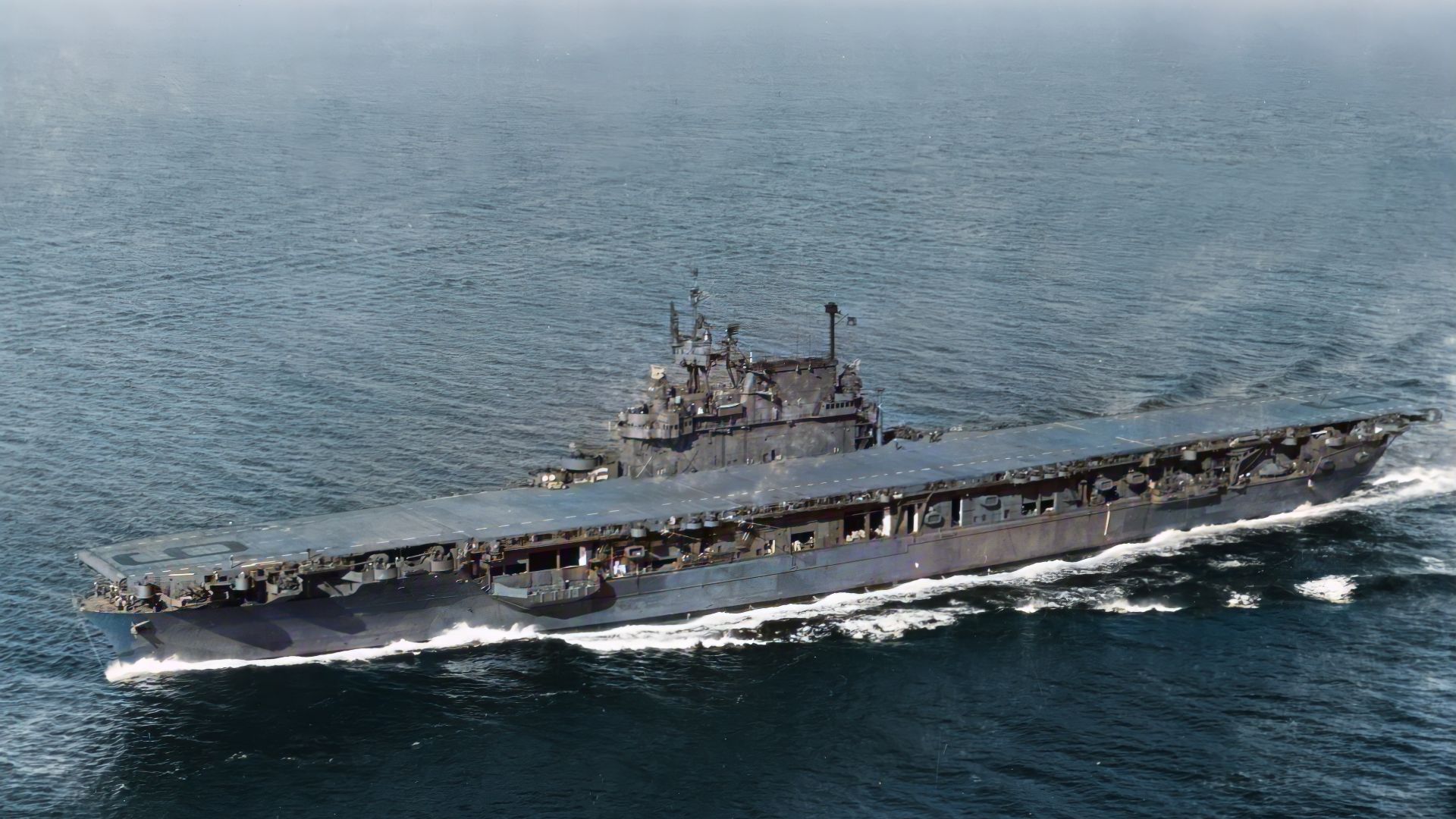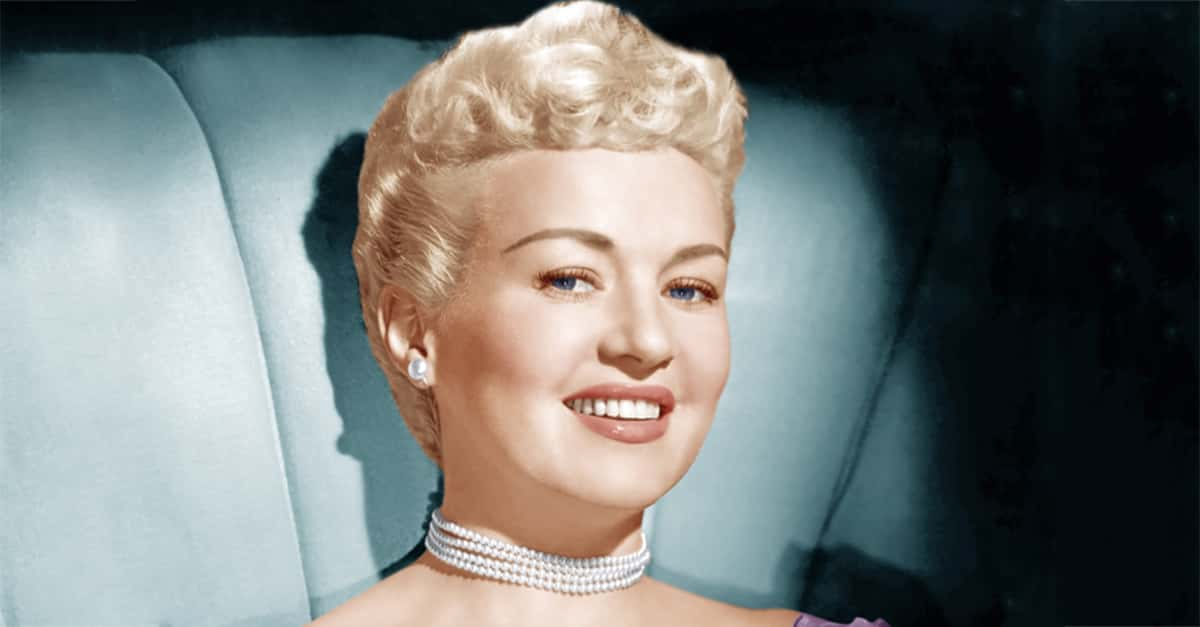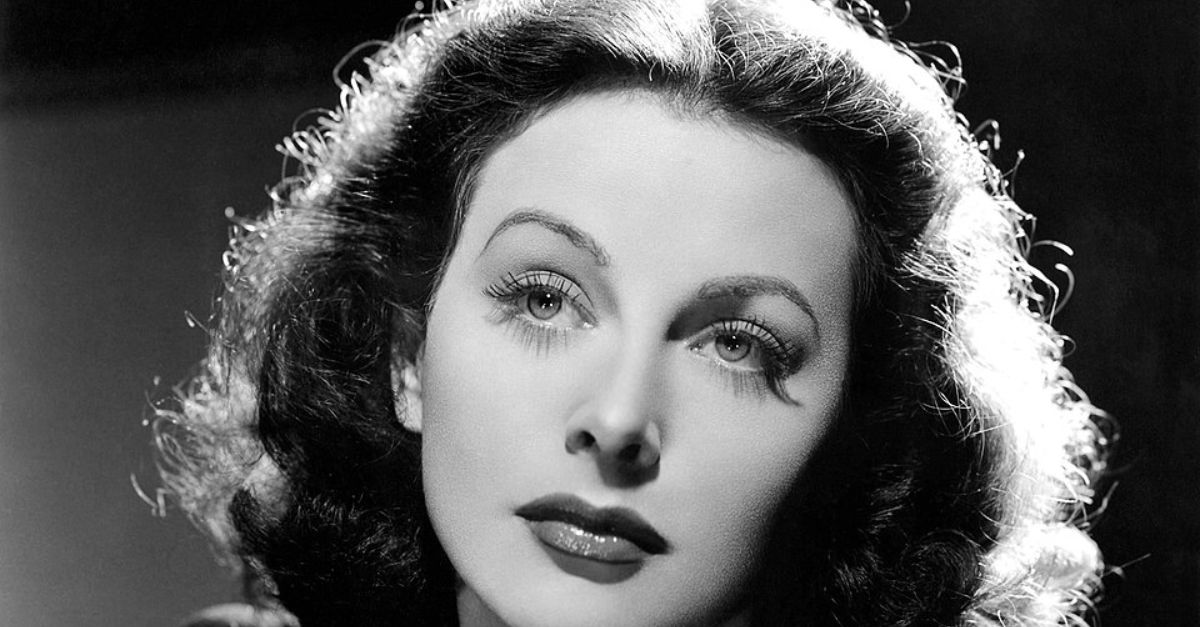Imagination Meets Engineering
Genius often emerges under pressure. The USS Enterprise began its journey, facing tight budgets and technical limitations. Yet somehow, it became the most recognizable spacecraft ever created.
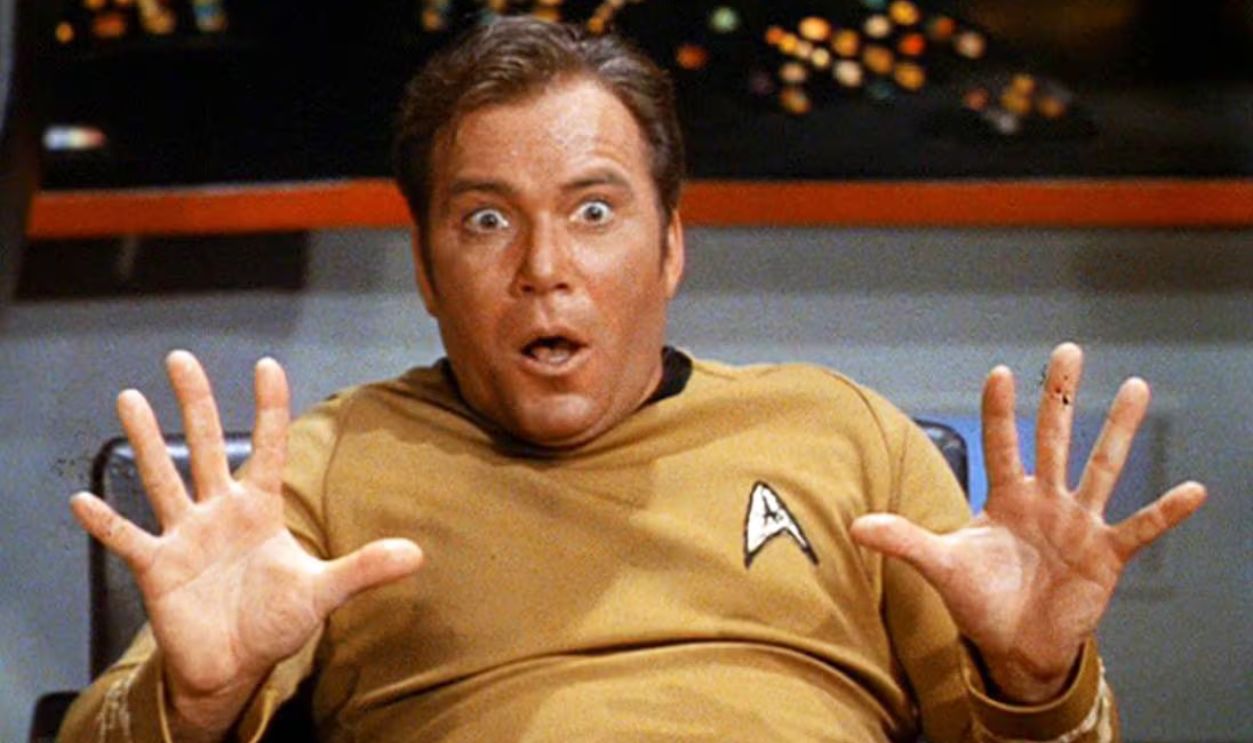
Core Identity
The USS Enterprise was the central setting of the first Star Trek television series (1966–69), nine films, and Star Trek: Strange New Worlds (2022–present). Its mission of exploration, seeking new worlds and civilizations, shaped the entire franchise.
 Star Trek: First Contact (1996) - It's the Enterprise Scene | Movieclips by Movieclips
Star Trek: First Contact (1996) - It's the Enterprise Scene | Movieclips by Movieclips
Origin Of The Name
Did you know the Enterprise wasn't always called Enterprise? Roddenberry had initially named it Yorktown. He later changed it because he was fascinated with the real-life aircraft carrier USS Enterprise. "I had always been proud of that ship and wanted to use the name," he once explained.
Story Behind NCC-1701
There is an interesting Cold War tale behind the famous registry number. The letters "NC" were derived from American aircraft registration codes, while the second "C" was added to symbolize a future where Cold War rivals, the US and Soviet Union, would collaborate in space exploration.
 Star Trek: Inside the USS Enterprise NCC-1701 by Halfscreen
Star Trek: Inside the USS Enterprise NCC-1701 by Halfscreen
Story Behind NCC-1701 (Cont.)
This showed designer Matt Jefferies' optimistic vision of a united humanity. He chose "1701" to avoid confusion with other numbers on the screen, avoiding digits like 3, 6, 8, and 9. The number also signifies that the Enterprise was the first ship of Starfleet's 17th starship design.
 Star Trek: Inside the USS Enterprise NCC-1701 by Halfscreen
Star Trek: Inside the USS Enterprise NCC-1701 by Halfscreen
No Rockets Allowed
Well, Roddenberry's vision of the object was crystal clear: “No streaks of smoke, no jet intakes, rocket exhaust, or anything like that”. He wanted something that was unlike any spacecraft in science fiction magazines or films, more like a true deep space vessel that looked futuristic.
 The USS Enterprise NCC 1701 Refit by Tom Pickett's Astrophotography
The USS Enterprise NCC 1701 Refit by Tom Pickett's Astrophotography
Future-Forward Thinking
Matt Jefferies approached the Enterprise design with amazing foresight. Rather than making something purely fantastical, he tried to envision “what the fourth, fifth, or tenth generation of present-day equipment would be like”. This grounded outlook made the ship feel authentically possible.
 Star Trek: The Evolution of the USS Enterprise by Halfscreen
Star Trek: The Evolution of the USS Enterprise by Halfscreen
Engineering Logic
Jefferies also reasoned that warp engines would be extraordinarily powerful and potentially dangerous. To ensure crew safety, he positioned the nacelles away from the main hull, creating its distinctive silhouette. This "aircraft logic" mirrored his prior experience in aviation design.
 USS Enterprise-D in Space Engine by FSclips
USS Enterprise-D in Space Engine by FSclips
Saucer Evolution
Well, that iconic saucer section almost never existed. The designer initially avoided a disk shape, worried about looking too much like typical flying saucers. What we now recognize as the primary hull actually began as a sphere, gradually flattening into the distinctive disc that has inspired generations.
 USS Enterprise-D in Space Engine by FSclips
USS Enterprise-D in Space Engine by FSclips
Designed For Television
The Enterprise needed to be instantly recognizable, even during brief flashes on small 1960s TV screens. So, Jefferies purposely kept the layout "very simple, but immediately identifiable”. He did this by making a silhouette viewers could recognize in a split second, even with limited special effects technology.
 Star Trek: Enterprise - E All Scenes Full HD by Asw
Star Trek: Enterprise - E All Scenes Full HD by Asw
Upside-Down Starship
In an amusing early development twist, his small Enterprise model hung upside-down when suspended by a string. When NBC executives first saw the design, Jefferies had to convince them the ship should genuinely be oriented differently. The distinctive shape worked either way.
 Star Trek: Enterprise - E All Scenes Full HD by Asw
Star Trek: Enterprise - E All Scenes Full HD by Asw
Maintenance-Free Exterior
Why is the spaceship hull so smooth compared to later sci-fi ships? Jefferies had a practical explanation: everything would be serviced from inside. This elegant solution eliminated the need for external hatches and maintenance points. It gave the ship its sleek, uncluttered appearance.
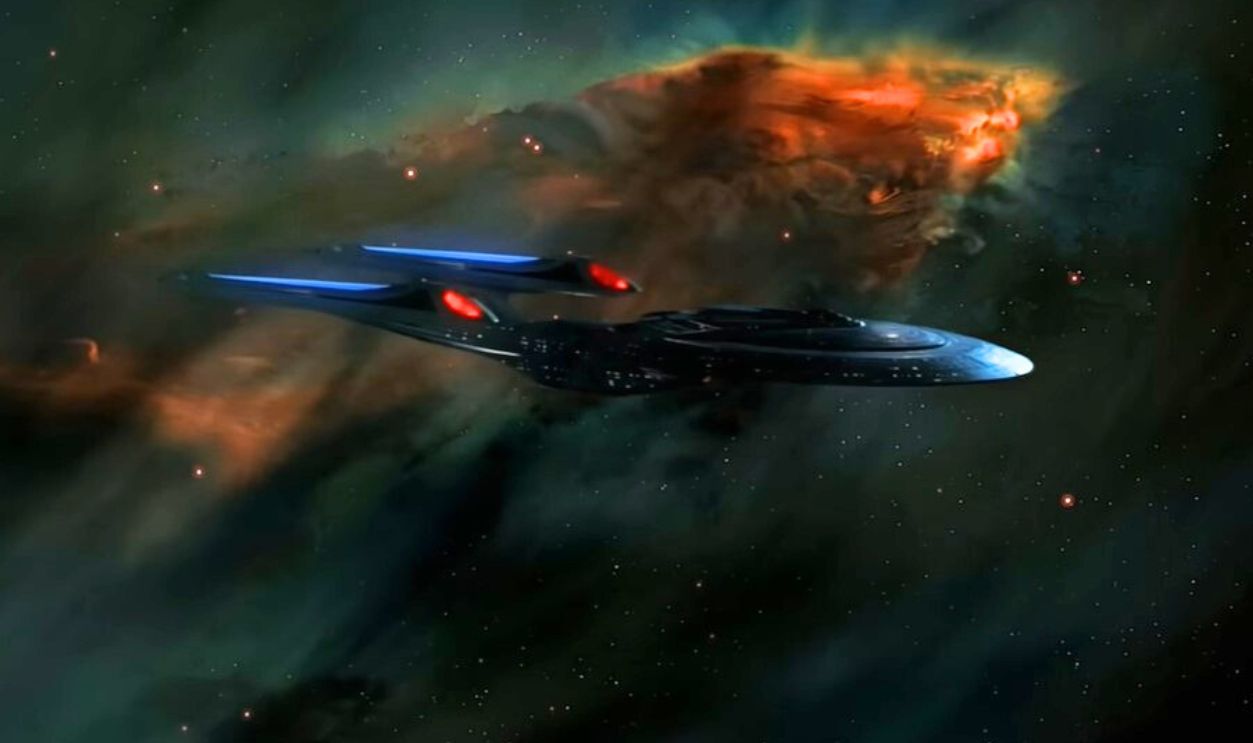 Star Trek: Enterprise - E All Scenes Full HD by Asw
Star Trek: Enterprise - E All Scenes Full HD by Asw
Recycled Klingon Design
Those menacing Klingon ships that appeared in season 3 weren't constructed from scratch. This man cleverly repurposed the Enterprise's basic components, a central body, two engine pods, and a neck with a head, rearranging them into something pretty alien but within the same design universe.
 The Most Powerful Klingon Ship, Glory to the EMPIRE! by Certifiably Ingame
The Most Powerful Klingon Ship, Glory to the EMPIRE! by Certifiably Ingame
Miniature To Icon
The very first model of the same was small, measuring just 33 inches in length. It was crafted by Richard Datin out of solid wood and was used for the opening credits and the unaired pilot, "The Cage," of Star Trek: The Original Series.
11-Foot Masterpiece
However, television history changed when the main shooting model took shape. This 11-foot behemoth weighed about 276 pounds and cost around $6,000. The same was constructed using plaster, sheet metal, and wood, displaying the ingenuity of its creators during the 1960s.
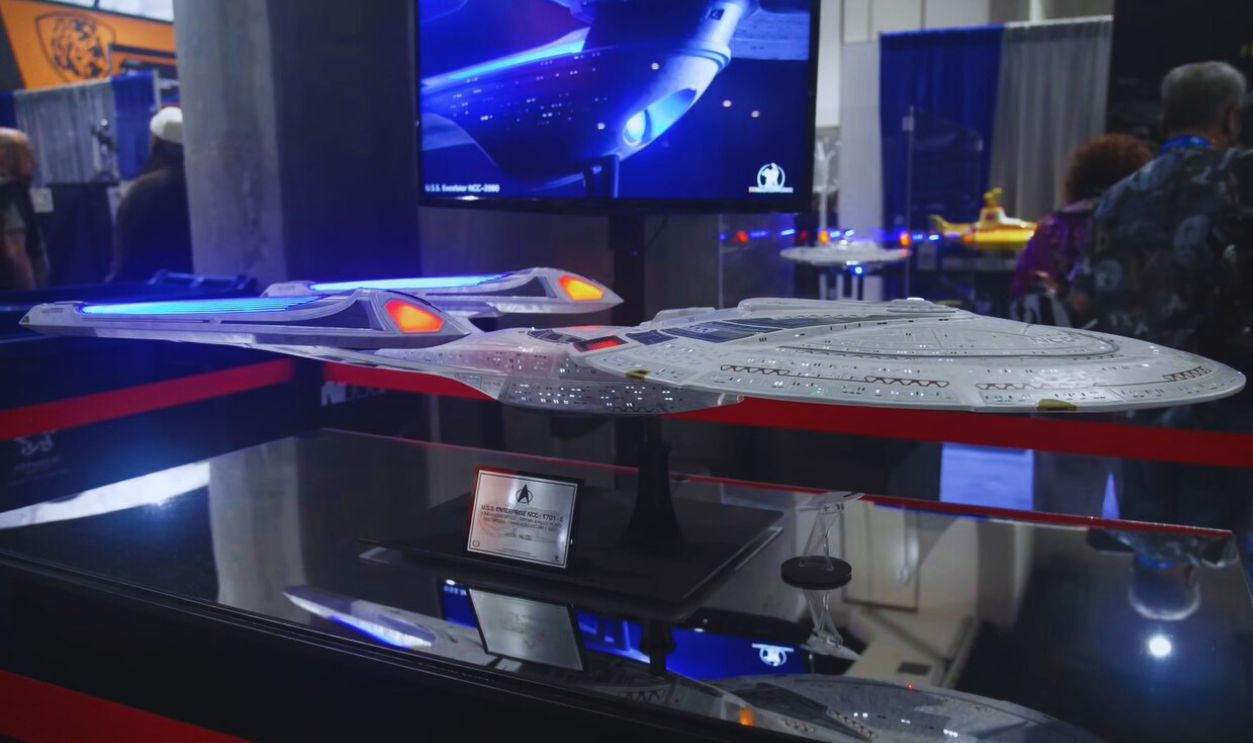 Epic Star Trek Studio Scale Model Builds! by Adam Savage’s Tested
Epic Star Trek Studio Scale Model Builds! by Adam Savage’s Tested
One-Sided Starship
Here's a surprising filming secret. The Enterprise could only be filmed from its right side. This is because all the internal wiring ran along the left side. When shots required showing the port side, editors either flipped the footage or used the smaller 33-inch model instead.
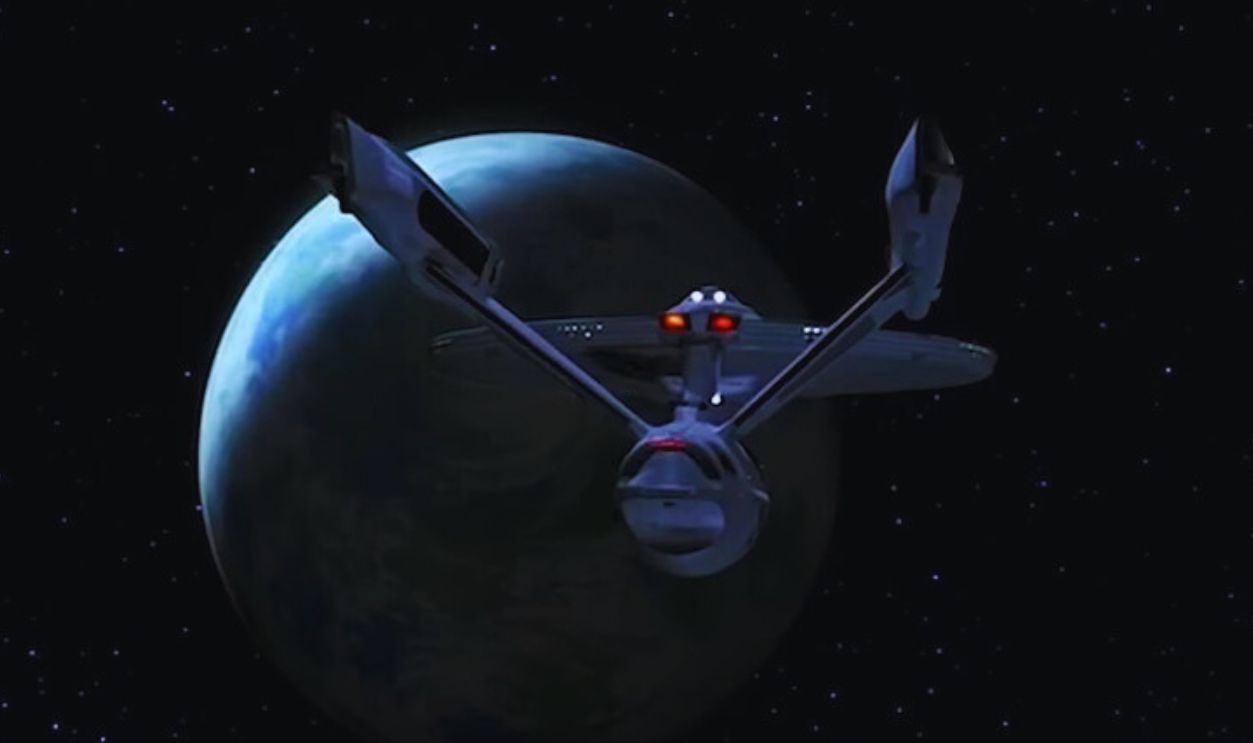 USS Enterprise - Every Movie Scene [High Definition] by The Video Editing Guy
USS Enterprise - Every Movie Scene [High Definition] by The Video Editing Guy
Speed Without Cliches
How do you show a spaceship moving at incredible speeds without using tired visual tricks? That challenge tormented the effects team. The massive model left little room for camera movement in the filming space, forcing creators to come up with new ways to suggest interstellar travel.
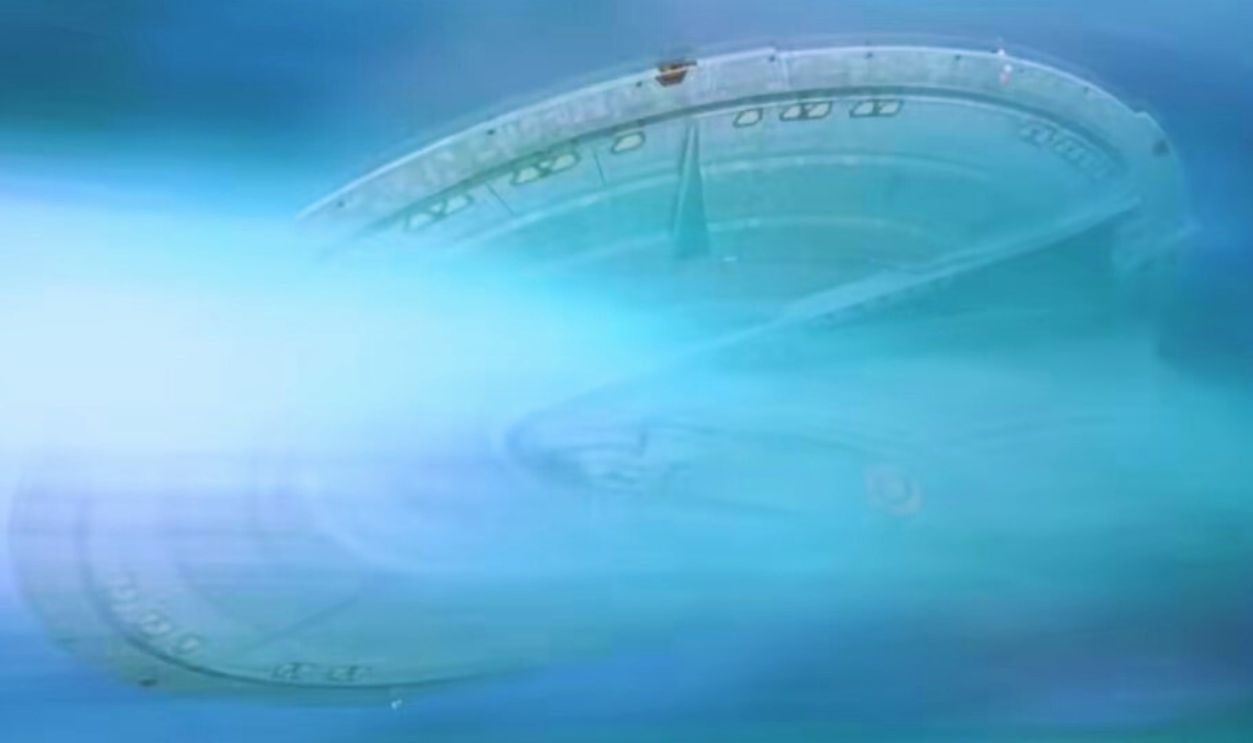 Star Trek: Enterprise - E All Scenes Full HD by Asw
Star Trek: Enterprise - E All Scenes Full HD by Asw
Budget-Friendly Filming
Advanced motion control equipment was prohibitively expensive during the series' production. Therefore, the team relied on stop-motion techniques to film the USS Enterprise, manually adjusting its position frame by frame. This painstaking process allowed them to simulate movement convincingly despite budget constraints.
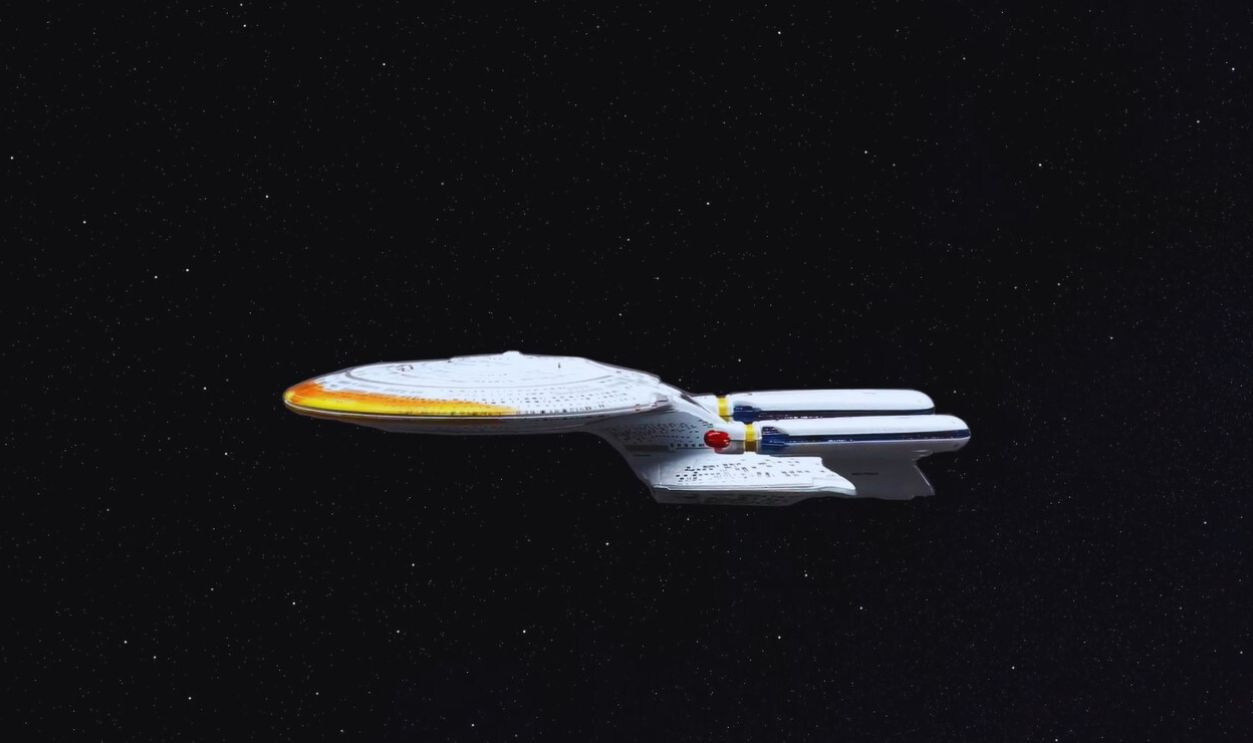 STAR TREK Stop Motion by Transformer4777
STAR TREK Stop Motion by Transformer4777
Animated Enterprise Adventures
When Star Trek became a cartoon (1973–75), animators used a clever method called rotoscoping. They traced over footage of the physical model to recreate its movements. This helped the animated series to feel like a natural extension of the original show rather than a separate entity.
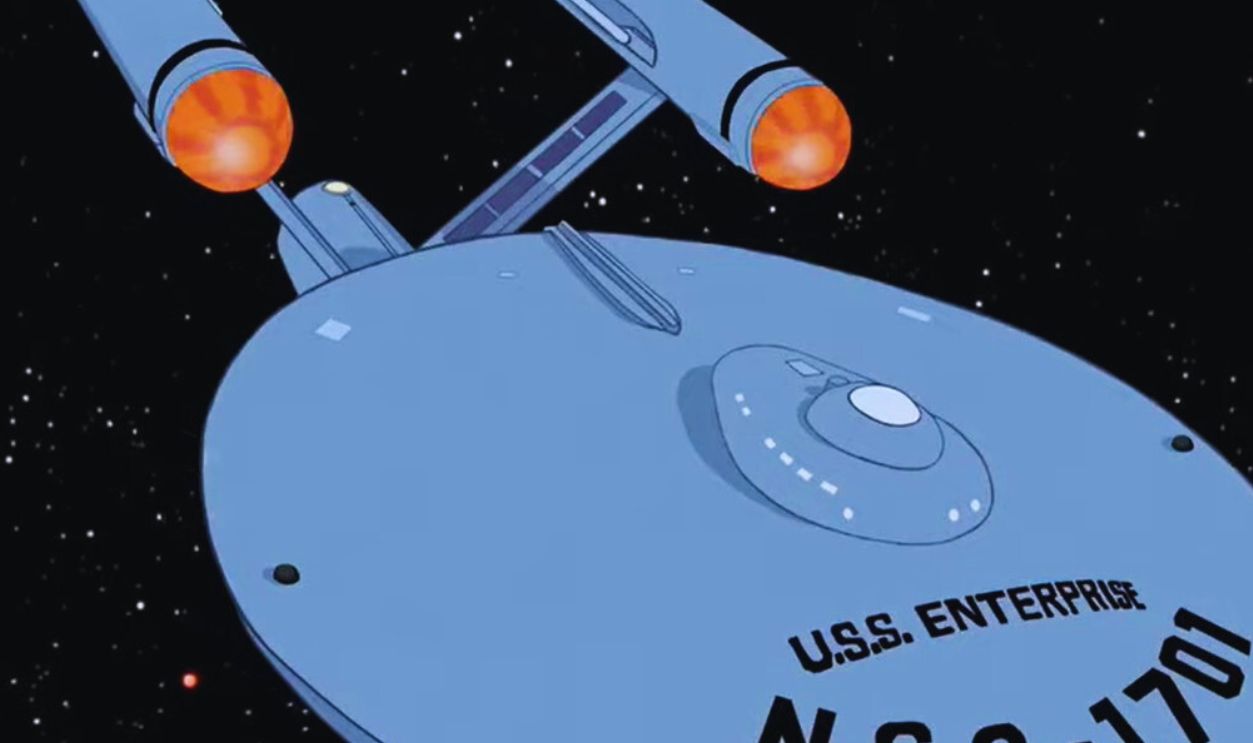 STAR TREK Logical Thinking #65 - Fallacy of the False Premise (Unsound Argument) by CHDanhauser
STAR TREK Logical Thinking #65 - Fallacy of the False Premise (Unsound Argument) by CHDanhauser
Gray Lady
Additionally, its complex color scheme posed problems for animators. The original model possesses a pearlescent, multi-toned finish that is impossible to capture in limited animation. Their solution was to simplify it to a consistent gray throughout the animated series, forming a different but recognizable appearance.
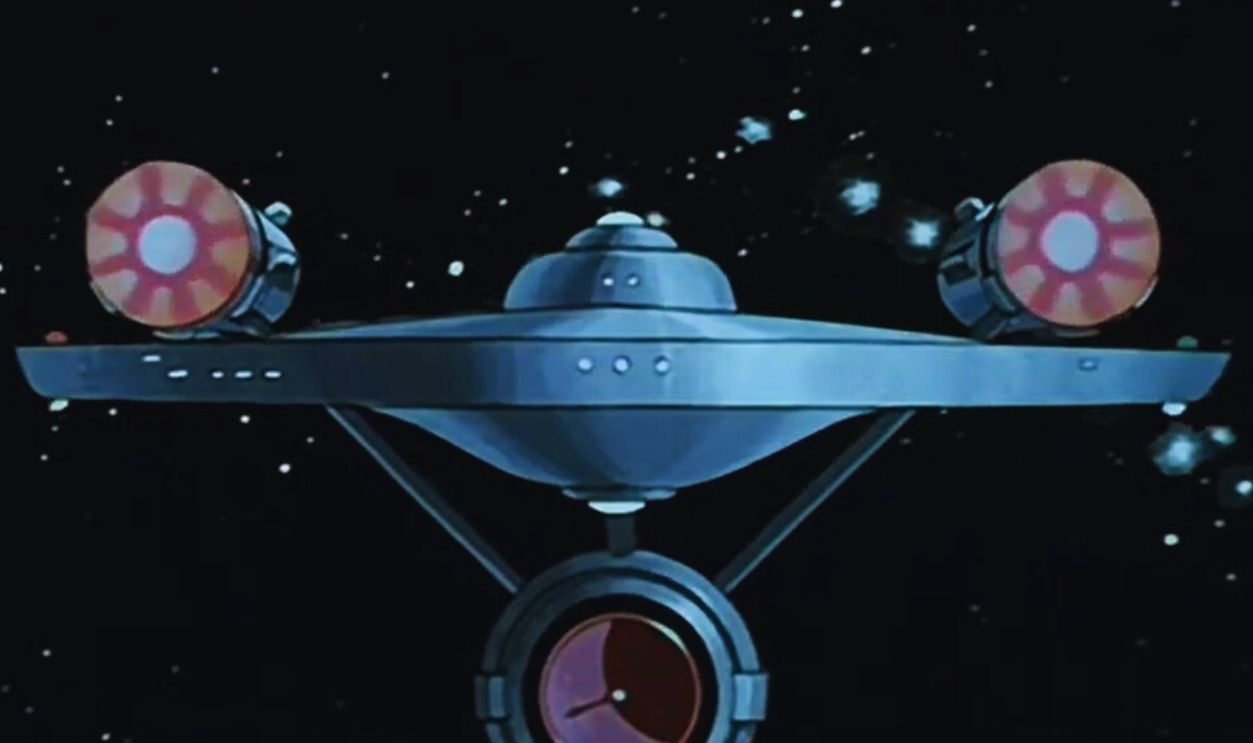 The Making of Star Trek: The Animated Series by Cheesy Buzz
The Making of Star Trek: The Animated Series by Cheesy Buzz
Monochromatic Beginnings
The USS Enterprise bridge underwent a dramatic transformation between the two original Star Trek pilots. In the first pilot, "The Cage," the bridge was designed in a monochromatic gray palette. This subdued look highlighted the fact that many televisions were still black-and-white at the time.
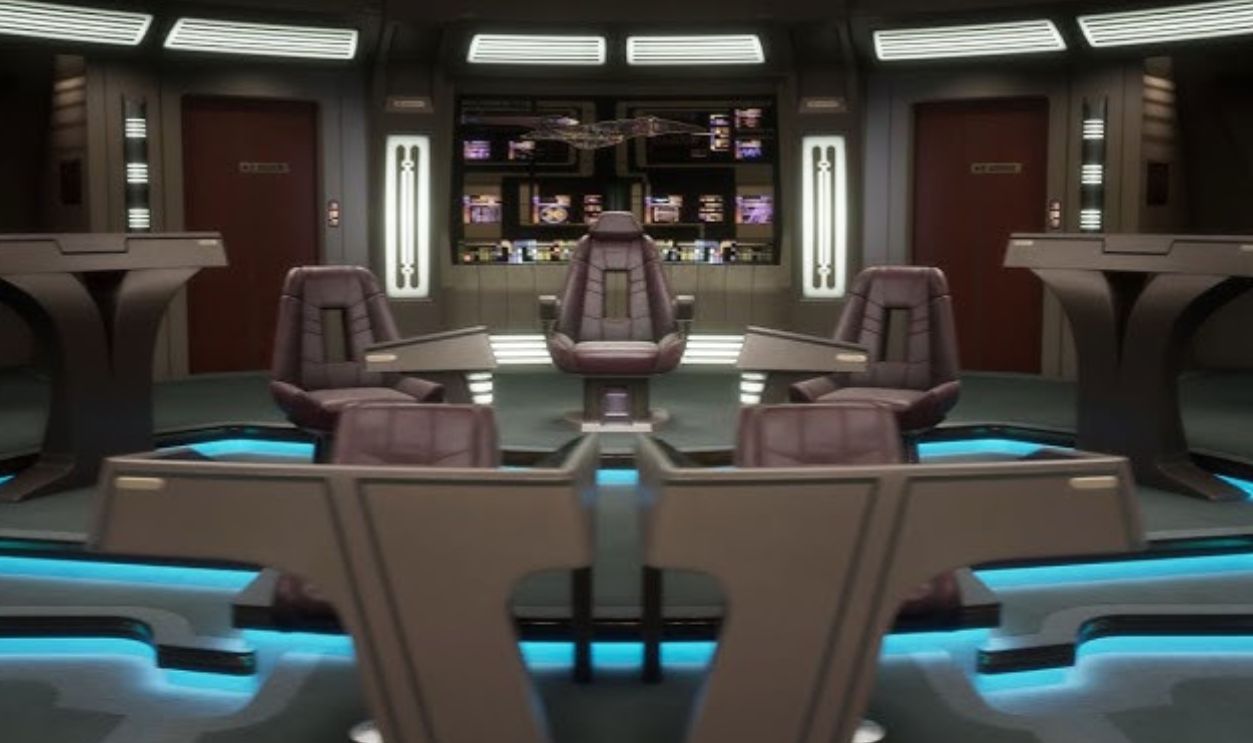 U.S.S. Enterprise-E Main Bridge (Star Trek: First Contact) by Donny Versiga
U.S.S. Enterprise-E Main Bridge (Star Trek: First Contact) by Donny Versiga
Colorful Revamp
By the second pilot, "Where No Man Has Gone Before," the bridge was redesigned with bright colors, including red, gold, and blue accents. This change aligned with the increasing adoption of color TVs in households. In a way, it made the show visually appealing to a broader audience.
 Inside the Original Enterprise Bridge by Donny Versiga
Inside the Original Enterprise Bridge by Donny Versiga
Hot Technology
There was more to the futuristic bridge electronics than meets the eye. These intricate systems produced so much heat that costly air conditioning was needed. Unfortunately, this was a common issue with early electronic equipment, as it often relied on vacuum tubes.
 Star Trek: First Contact (1996) - It's the Enterprise Scene | Movieclips by Movieclips
Star Trek: First Contact (1996) - It's the Enterprise Scene | Movieclips by Movieclips
Tulip Chairs In Space
Those sleek chairs on the Enterprise Bridge were manufactured by Burke of Dallas and resembled Eero Saarinen's famous tulip chair designs. The brilliant incorporation of mid-century modern furniture helped make the 23rd-century starship feel both futuristic and subtly familiar to 1960s audiences.
 Inside the Original Enterprise Bridge by Donny Versiga
Inside the Original Enterprise Bridge by Donny Versiga
Donated Bridge
When production ceased after the third season, major elements of the Bridge set weren't scrapped or stored. They were donated to UCLA's Theater Arts Department. The remaining components were unfortunately discarded, a decision many fans would later lament as invaluable Trek history lost forever.
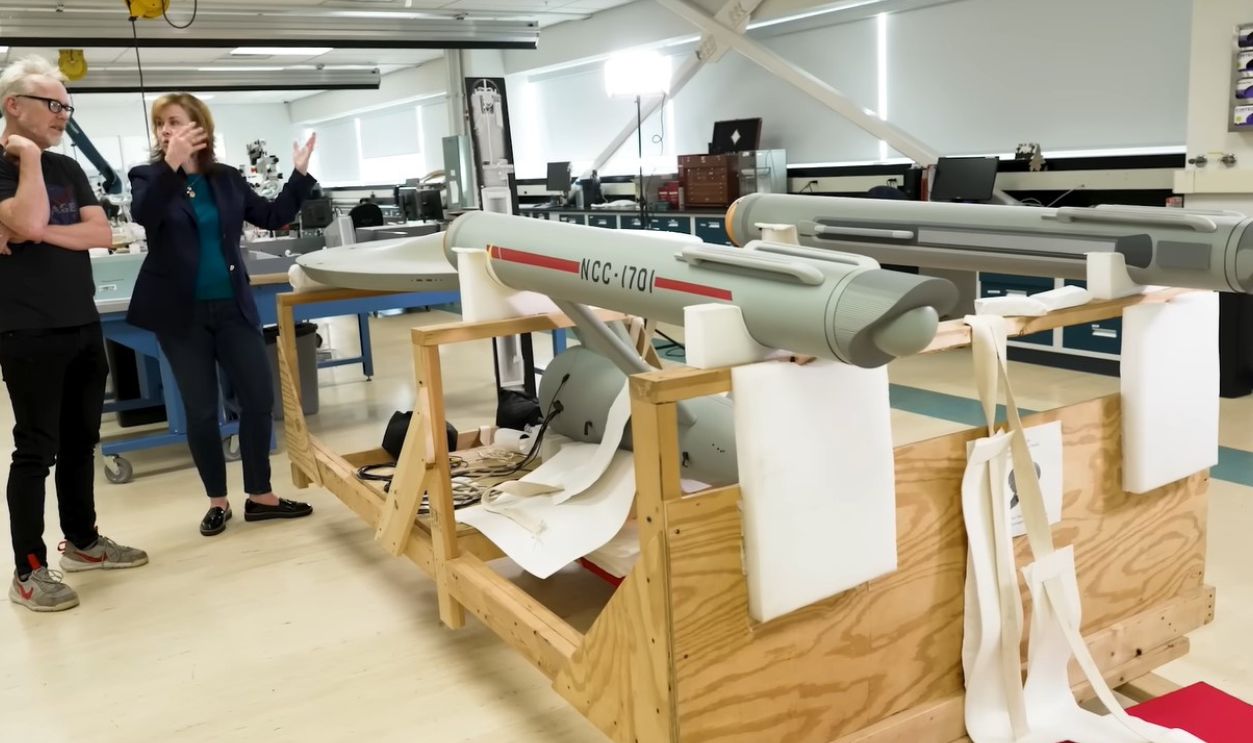 The Original Star Trek USS Enterprise Filming Model! by Adam Savage’s Tested
The Original Star Trek USS Enterprise Filming Model! by Adam Savage’s Tested
Budget-Saving Set Tricks
Desilu Studios' tight budget led to creative problem-solving. Through clever redressing, the engine room doubled as the shuttle bay. Other multipurpose sets included the briefing room (also the recreation room and cargo deck) and Kirk's cabin, which changed into Spock's quarters when needed.
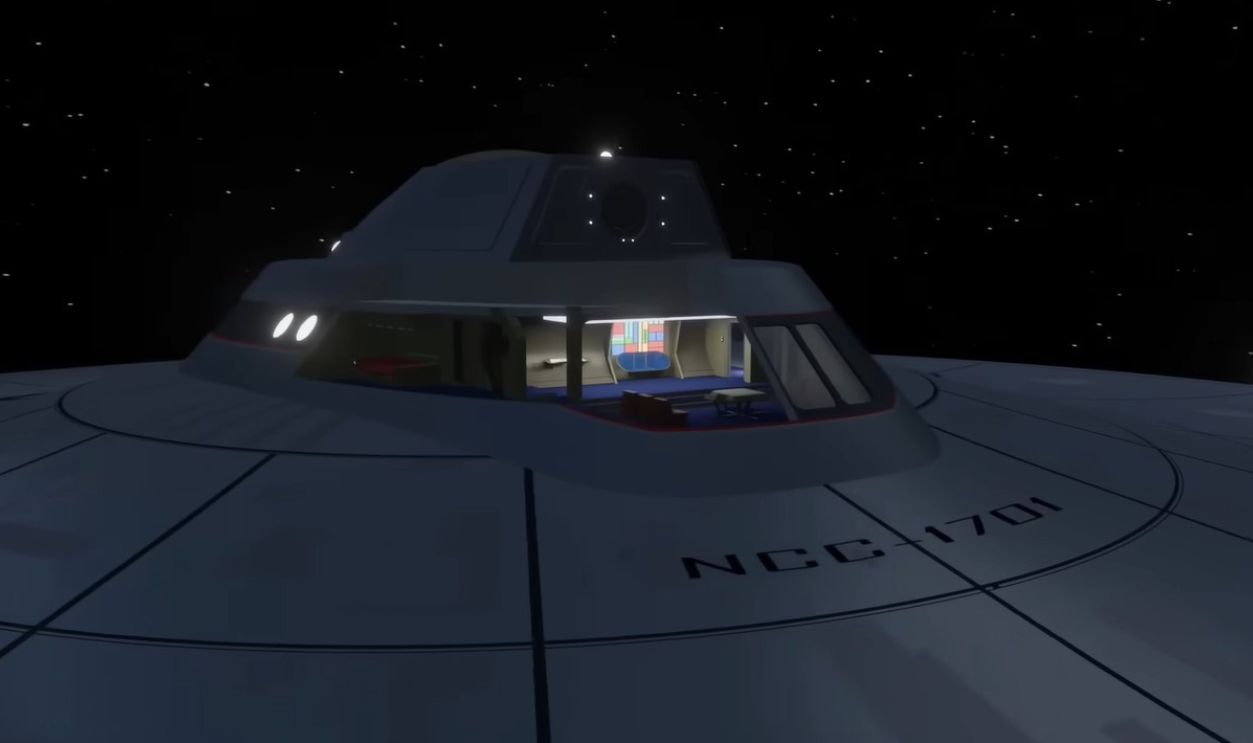 The Kirk's Quarters Question: why so small? by We Travel by Night
The Kirk's Quarters Question: why so small? by We Travel by Night
Forced Perspective Engineering
Here’s how Star Trek created the illusion of a grand engineering section. It was through the planned use of forced perspective and small actors. This visual trick made the relatively modest 40-foot set appear to be a sprawling 100-foot engineering space which was best for a Constitution-class starship.
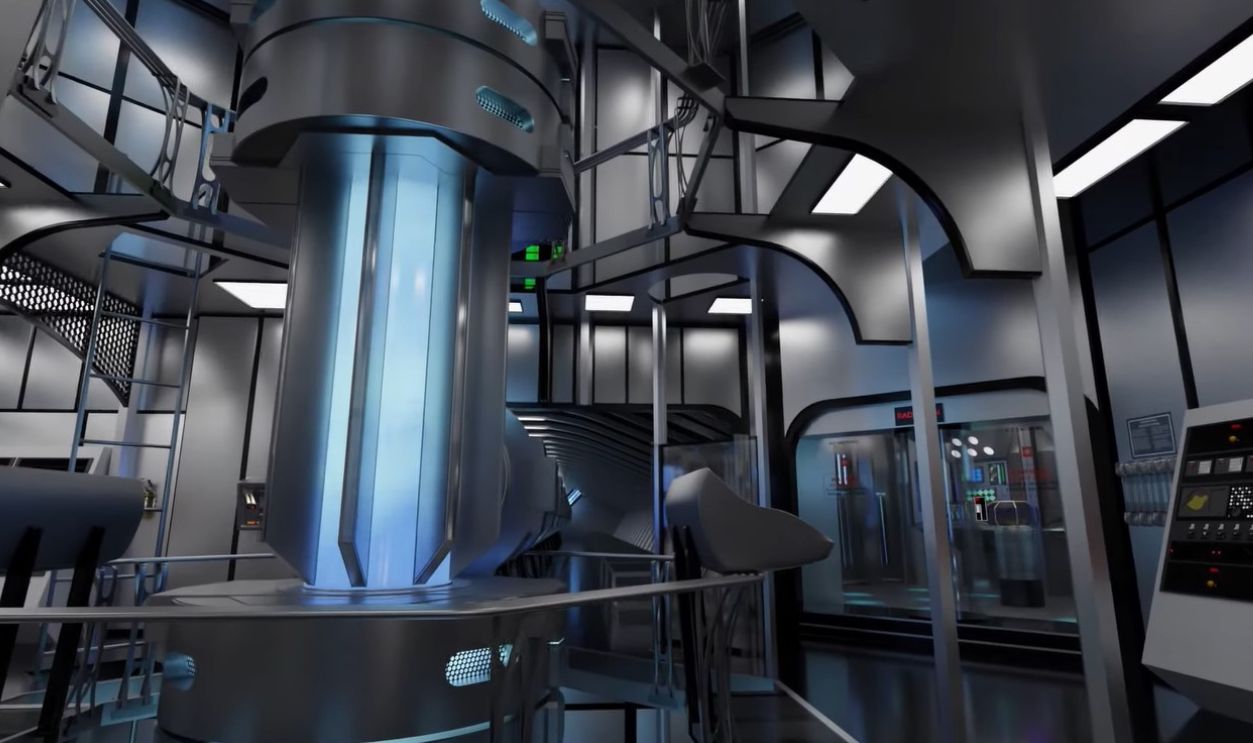 USS Enterprise Engineering from Star Trek II the Wrath of Khan by Rob Betz
USS Enterprise Engineering from Star Trek II the Wrath of Khan by Rob Betz
Des Moines Holiday Inn Style
Extremely realistic, Gene Roddenberry described the Enterprise's hallways as “Des Moines Holiday Inn Style”. By likening the corridors to a contemporary hotel, Roddenberry aimed to develop a sense of familiarity and functionality, which made the ship's interior more relatable and accessible to audiences.
 Inside the Corridors of the U.S.S. Enterprise Refit by Donny Versiga
Inside the Corridors of the U.S.S. Enterprise Refit by Donny Versiga
Homey Starship Touches
Talking specifically about the interior, it might have felt too sterile without the artistic touches added by Mike Minor. This individual added artistic elements like paintings to various areas of the ship, including Captain Kirk's quarters, recreation spaces, and even the bridge.
 Star Trek: Inside the USS Enterprise NCC-1701 by Halfscreen
Star Trek: Inside the USS Enterprise NCC-1701 by Halfscreen
Recreation Deck
In the concept art for Star Trek: Phase II, Minor depicted a recreation deck with anti-gravity features, tree-like structures, and scenes of crew members engaging in leisure activities like 3D chess. These designs underlined the human side of life aboard the starship.
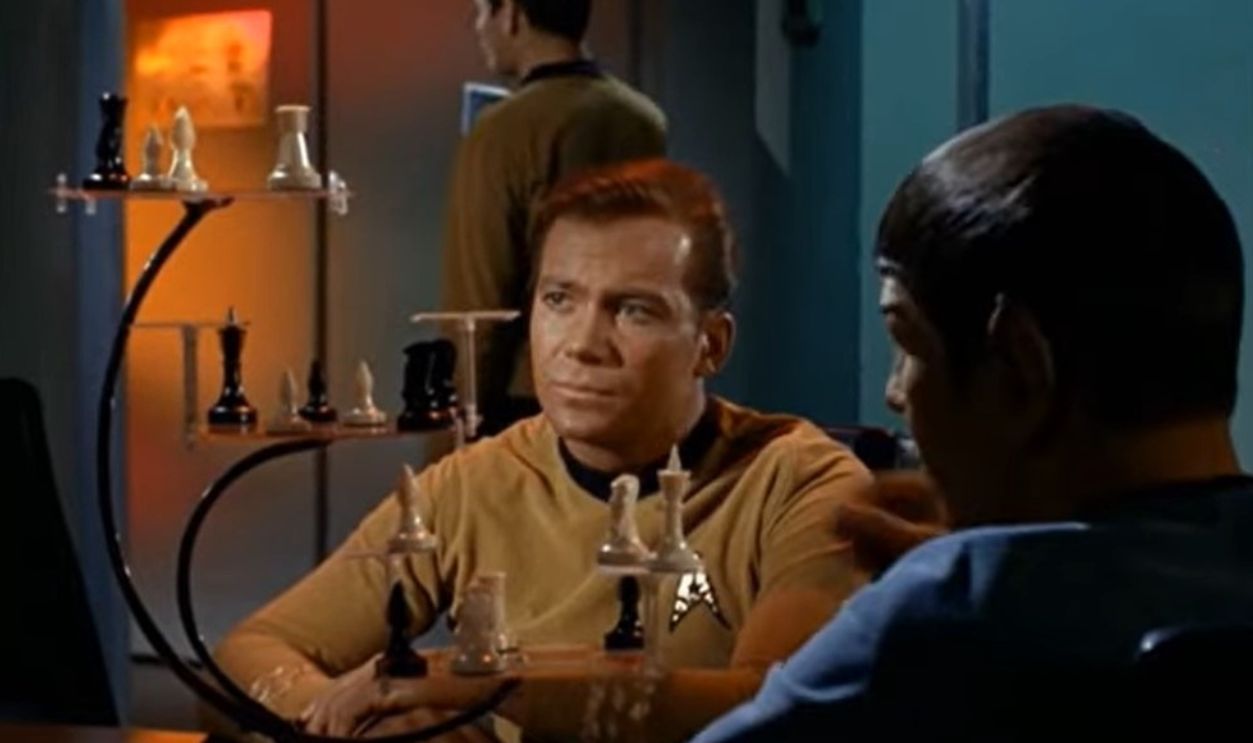 Star Trek On Chess by cschessnews
Star Trek On Chess by cschessnews
The Jefferies Tube Legacy
Remember those maintenance tunnels where engineers often crawled? They were named after Matt Jefferies, but not officially. The production staff nicknamed the set the "Jefferies tube" as an inside joke. The term later appeared in actual dialogue across spinoffs. It immortalized the designer in Trek lore.
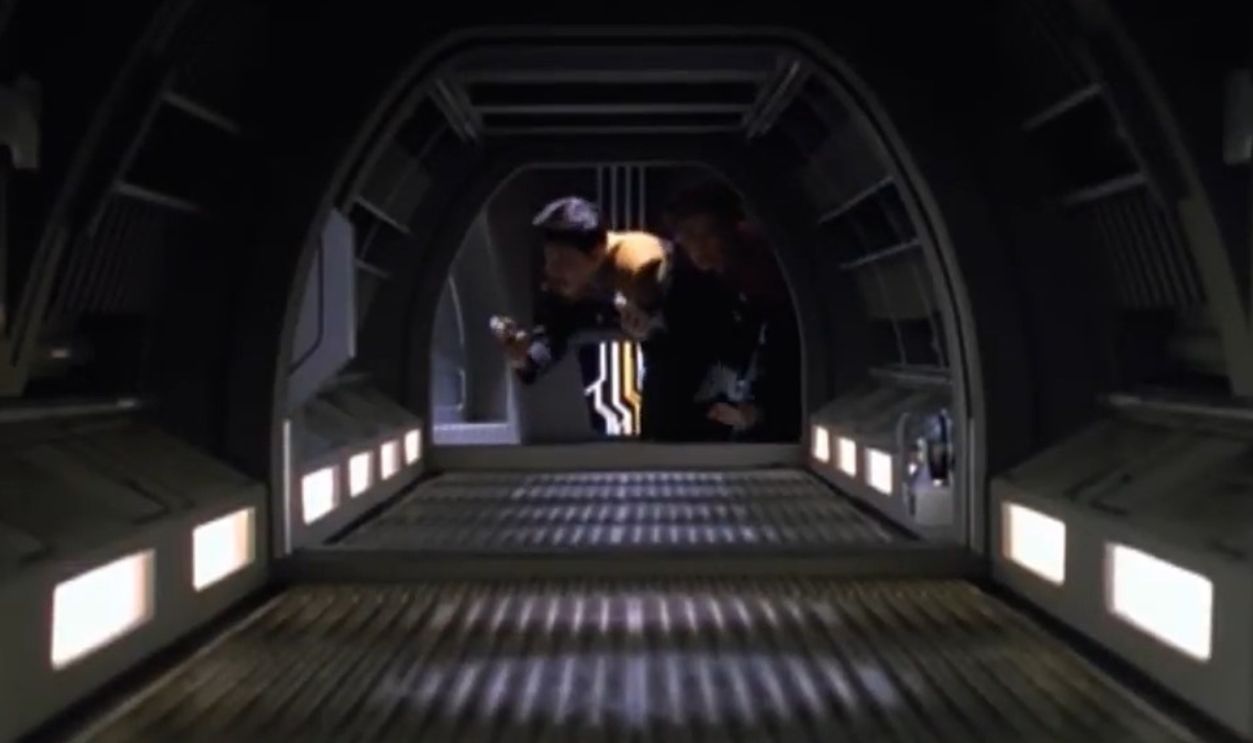 Video 50: Star Trek Voyager (Jefferies Tubes) by Janeway Fiebig
Video 50: Star Trek Voyager (Jefferies Tubes) by Janeway Fiebig
Organ-Powered Sound Effects
Sound designer Doug Grindstaff and his team ingeniously formed the distinctive sounds of the USS Enterprise. They utilized unexpected sources and limited resources. Many console sounds, such as the chirps and pings on the bridge, were generated using musical instruments like a Hammond electric organ.
 Star Trek: First Contact (1996) - It's the Enterprise Scene | Movieclips by Movieclips
Star Trek: First Contact (1996) - It's the Enterprise Scene | Movieclips by Movieclips
Organ-Powered Sound Effects (Cont.)
Well, this gave the ship’s auditory environment a pleasant, musical quality that made even mundane actions, like pressing buttons, engaging to listen to. Additionally, the rumbling engine sounds of the spacecraft were formed by incorporating noise from a particularly loud air conditioner.
 Star Trek: Enterprise - E All Scenes Full HD by Asw
Star Trek: Enterprise - E All Scenes Full HD by Asw
Breaking Physics For Drama
Though space is silent, the memorable "whoosh" sound during exterior shots was a creative pick by the Star Trek producers. The composer Alexander Courage, who also crafted the show's original theme music, recorded the "whoosh" sound for the opening title sequence.
 Star Trek: Enterprise - E All Scenes Full HD by Asw
Star Trek: Enterprise - E All Scenes Full HD by Asw
Breaking Physics For Drama (Cont.)
He achieved this effect by blowing air across a microphone. Courage's work extended beyond this sound. It is said that he collaborated with electronic music pioneer Jack Cookerly to explore different ways of producing other effects, such as the transporter sound.
 Star Trek: Enterprise - E All Scenes Full HD by Asw
Star Trek: Enterprise - E All Scenes Full HD by Asw
Second Turbolift Solution
When designing the ship for The Animated Series, the artists added a second turbo lift to the bridge. This practical addition came after Roddenberry was asked a simple question: "What do they do if the doors get stuck?" Sometimes, the most logical improvements are the most obvious.
 The Enterprise Dorsal Problem: how did the turbolifts pass through it? by We Travel by Night
The Enterprise Dorsal Problem: how did the turbolifts pass through it? by We Travel by Night
Detailed Deck Plans
In 1974, Franz Joseph designed complete interior deck plans for the aircraft with Roddenberry's official approval. These intricately detailed blueprints became cherished collector's items. After all, it allowed fans to explore every theoretical corner of their favorite starship long before virtual tours existed.
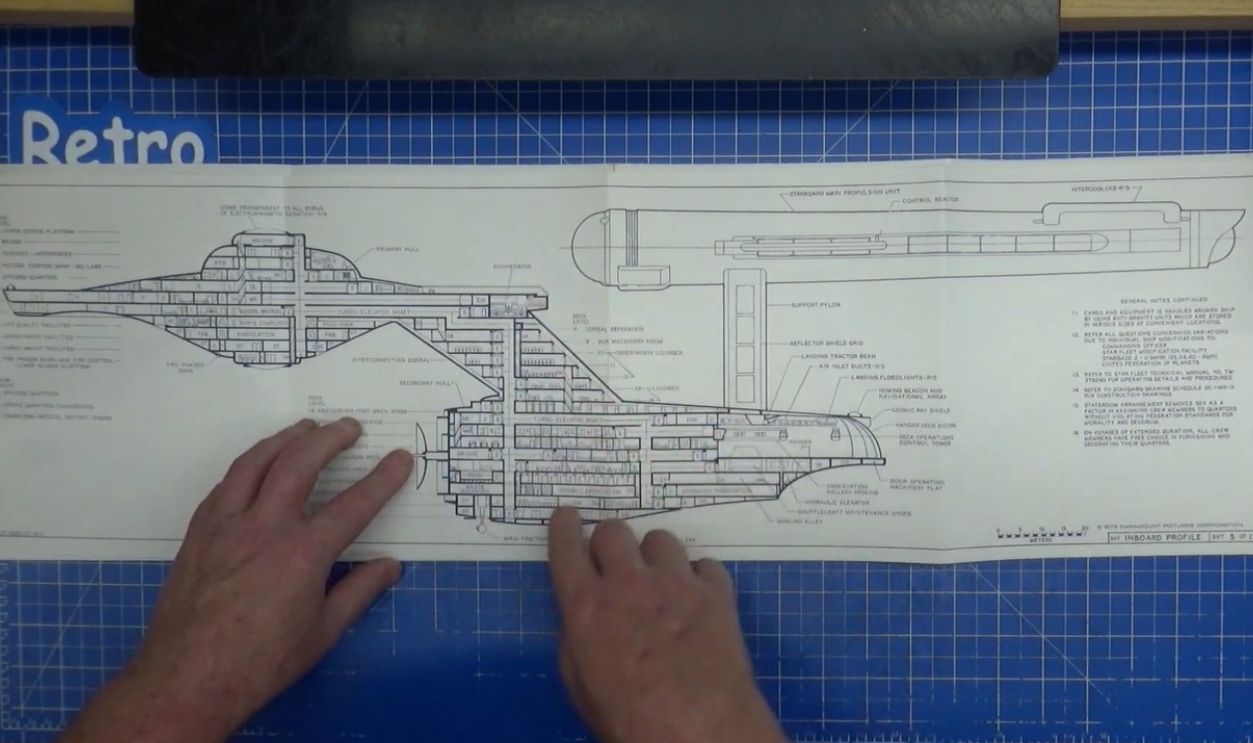 Star Trek Starship Blueprints - General Plans for Constitution Class USS Enterprise by RT Ralph
Star Trek Starship Blueprints - General Plans for Constitution Class USS Enterprise by RT Ralph
Motion Picture Makeover
Note that this element received a major redesign for Star Trek: The Motion Picture (1979). The movie medium would reveal more detail than television, requiring a huge upgrade. Roddenberry addressed these changes within the story by explaining that the object had undergone a "major refit".
 STAR TREK SIGNED BLUEPRINTS OF THE ENTERPRISE by RICHARD TAYLOR by Paul Olsen
STAR TREK SIGNED BLUEPRINTS OF THE ENTERPRISE by RICHARD TAYLOR by Paul Olsen
Aztec Paint Pattern
Paul Olsen's peculiar "Aztec" hull layout was used in the film Enterprise. Small particles of mica in the paint altered its apparent color, suggesting interlocking panels providing structural strength. This subtle detail added a new level of realism to the beloved vessel.
 USS Enterprise - Every Movie Scene [High Definition] by The Video Editing Guy
USS Enterprise - Every Movie Scene [High Definition] by The Video Editing Guy
Filming Nightmare, Visual Dream
Its pearlescent paint brought some unexpected headaches. The surface caused light flare against dark backgrounds and reflected bluescreen light, complicating filming. However, effects supervisor Douglas Trumbull solved this by lighting the ship "like an ocean liner at night".
 USS Enterprise - Every Movie Scene [High Definition] by The Video Editing Guy
USS Enterprise - Every Movie Scene [High Definition] by The Video Editing Guy
The $150,000 Model
Apparently, Paramount Pictures subsidiary Magicam spent 14 months and $150,000 building the 8-foot movie version of the same. Its aluminum skeleton ensured no parts would sag, bend, or shake. Unlike the original model (filmed in only 17 positions), this one had five articulation points.
 USS Enterprise - Every Movie Scene [High Definition] by The Video Editing Guy
USS Enterprise - Every Movie Scene [High Definition] by The Video Editing Guy
Livelier Bridge For Sequel
For Star Trek II: The Wrath of Khan, director Nicholas Meyer wanted a "livelier" Enterprise bridge. Hence, the ship gained nautical characteristics like a ship's bell and boatswain's call. Additional blinking lights and signage uplifted the naval atmosphere Meyer envisioned for the sequel.
 Wrath of Khan Enterprise Bridge Preview by Donny Versiga
Wrath of Khan Enterprise Bridge Preview by Donny Versiga
No Window Debate
When redesigning the Enterprise for Discovery, one curious debate emerged: should the bridge have a window? Most Discovery ships had front-facing windows, but the Enterprise never had one. Designers solved this by depicting a large piece of transparent aluminum that could become opaque when needed.
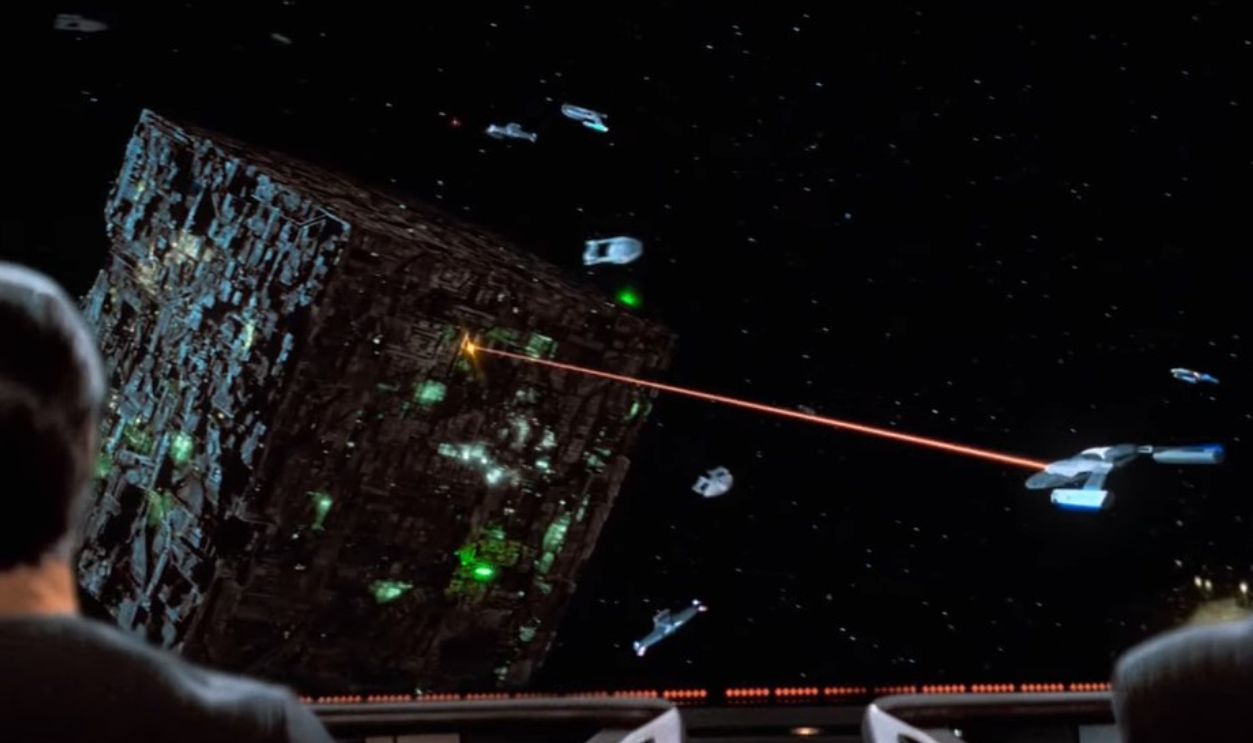 Star Trek: First Contact (1996) - It's the Enterprise Scene | Movieclips by MovieclipsControversial Destruction
Star Trek: First Contact (1996) - It's the Enterprise Scene | Movieclips by MovieclipsControversial Destruction
Producer Harve Bennett then made the shocking decision to finish the spaceship in Star Trek III: The Search for Spock (1984). His reasoning was that the plot would otherwise be predictable. News of the ship's demise leaked and caused an uproar even before release.
 Star Trek III: The Search for Spock - Trailer 1984 by Movie Trailer Archive
Star Trek III: The Search for Spock - Trailer 1984 by Movie Trailer Archive
Kirk's True Love
It held deep emotional meaning for Captain Kirk. David C. Fein, producer of The Motion Picture director's cut, described the starship as Kirk's lover. He noted that destroying the ship meant Kirk harmed the lady whom he considered dear more than any other person in the world. Star Trek III: The Search for Spock - Trailer 1984 by Movie Trailer Archive
Star Trek III: The Search for Spock - Trailer 1984 by Movie Trailer Archive


